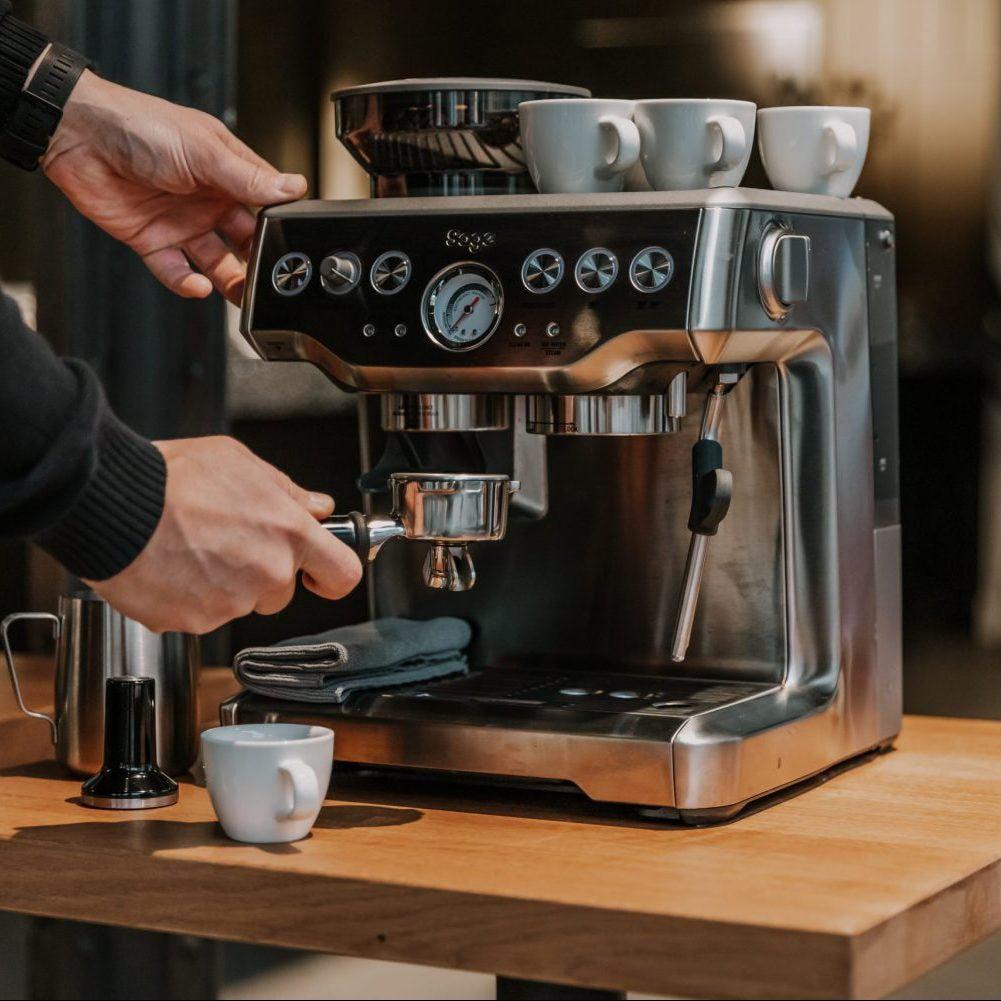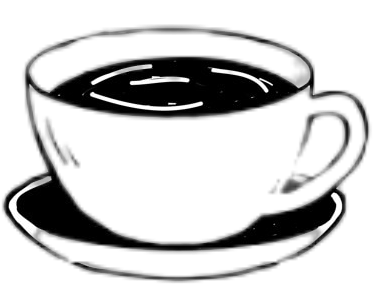As an espresso enthusiast, you know that brewing the perfect cup involves more than just selecting the right beans and grind size. One of the key factors that significantly impact the taste of your espresso is the brew temperature. Whether you're crafting espresso on a Breville Barista Express (or Sage Barista Express, depending on your location), adjusting the brew temperature can make a huge difference in flavor profile. This guide will help you understand how to change the brew temperature on your machine, optimizing your shots for a truly personalized coffee experience. Uncover the premium brewing capabilities in our Breville Dual Boiler BES920XL review

Product Review Conclusion: Mastering Brew Temperature for Better Espresso
Adjusting the brew temperature on the Breville/Sage Barista Express can take your espresso from good to great. By fine-tuning this setting, you can unlock the full potential of your espresso, allowing you to enjoy every cup just the way you like it. If you're aiming to enhance the richness, sweetness, and complexity of your coffee, the ability to change the brew temperature is a powerful tool. Experimenting with different temperatures to match your beans will lead to better-tasting shots every time. Explore the intuitive design and features in our Breville Barista Touch Impress review
Why Adjusting Brew Temperature Matters for Your Espresso
The Science Behind Brew Temperature and Coffee Flavor
Brew temperature plays a crucial role in how well your espresso extracts its flavors. If the water is too hot, it can lead to over-extraction, making your espresso taste bitter or burnt. Conversely, water that is too cold can under-extract the coffee, leaving you with a weak, sour flavor. The ideal temperature range for espresso is typically between 195°F and 205°F (90°C to 96°C). However, slight adjustments within this range can bring out different flavors depending on the type of roast or altitude of your location. Compare these two top models in our Breville Barista Express Impress vs Pro review
For lighter roasts, which often have bright, fruity notes, a slightly higher temperature is preferred to fully develop these flavors. On the other hand, darker roasts tend to perform better at lower temperatures, enhancing their chocolatey and caramel tones while minimizing bitterness. Adjusting the brew temperature ensures that you're extracting the full potential from your beans. Find the right machine for you in our Breville Barista Pro vs Express review
Breville/Sage Barista Express: A Quick Overview
Key Features of the Breville/Sage Barista Express
The Breville/Sage Barista Express is a highly regarded semi-automatic espresso machine known for its user-friendly interface and consistent performance. One of its standout features is the PID (Proportional-Integral-Derivative) controller, which stabilizes temperature during brewing, ensuring that each shot is consistent. However, many users are unaware that they can manually adjust the brew temperature, a feature that gives you greater control over the final flavor of your espresso. Learn the differences between these high-end machines in our Breville Oracle vs Oracle Touch review
Although there isn't a dedicated temperature dial on the machine, the process to adjust the brew temperature is simple and straightforward. With just a few button presses, you can alter the temperature and experiment to find your ideal setting.
Step-by-Step Guide: How to Adjust the Brew Temperature on Breville/Sage Barista Express
1. Power Off the Machine
Before making any changes, ensure your Breville Barista Express is powered off. Press the power button to turn the machine off and let it cool down.
2. Enter Programming Mode
To change the brew temperature, you must first enter programming mode. This is done by holding down the ‘Program’ button and then pressing the ‘Power’ button to turn the machine back on. Continue holding the ‘Program’ button until the control panel lights begin flashing, signaling that you've entered programming mode.
3. Select Your Desired Temperature
Once in programming mode, you can adjust the brew temperature using the ‘Single Shot,’ ‘Double Shot,’ and ‘Filter Size’ buttons. Each button serves a specific function:
- Single Shot Button: Lowers the temperature by 2°F (1°C).
- Double Shot Button: Raises the temperature by 2°F (1°C).
- Filter Size Button: Resets the temperature to the default 200°F (93°C).
The LED indicators above the buttons will guide you as you adjust the temperature:
- Both ‘1 Cup’ and ‘2 Cup’ lights on = Default temperature (200°F/93°C).
- ‘1 Cup’ light only = Lowered temperature (198°F/92°C).
- ‘2 Cup’ light only = Raised temperature (202°F/94°C).
4. Fine-Tune the Temperature
Make incremental adjustments by pressing either the Single or Double Shot button. Each press will change the temperature by 2°F (1°C), so small, precise changes are easy to make. For lighter roasts, you may want to increase the temperature slightly, while darker roasts may benefit from a cooler setting to reduce bitterness.
5. Save Your Settings
Once you've set the temperature to your liking, press the ‘Program’ button again to save the settings. The machine will briefly shut off and restart, applying your new brew temperature.
6. Test and Taste Your Espresso
After adjusting the temperature, brew a shot of espresso to taste the difference. Pay attention to the flavor, extraction time, and crema. If the flavor isn't quite right, you can make further adjustments or tweak other factors, like grind size or tamping pressure. It may take a few tries to dial in the perfect shot, but the results are well worth it.
Troubleshooting and Tips for Optimal Temperature Adjustments
What to Do If Temperature Changes Aren't Taking Effect
If your adjustments aren't working, double-check that you're in programming mode. The control panel lights should be flashing when you're in the right mode. Without entering programming mode, your temperature changes won't register.
Not Happy with the Flavor? Check Other Variables
If adjusting the brew temperature doesn't immediately improve the flavor of your espresso, consider checking other factors like grind size and tamping pressure. Temperature is just one element in the equation, and it's often necessary to fine-tune other variables for the best results.
Keep Track of Settings for Different Beans
If you regularly switch between different types of beans, it’s helpful to keep a log of the brew temperatures that work best for each roast. Lighter roasts may need higher temperatures, while darker roasts perform better at lower temperatures. This way, you can quickly dial in the right temperature for every batch of beans.

Conclusion: Elevate Your Coffee Game with Temperature Adjustments
Understanding how to change the brew temperature on your Breville/Sage Barista Express opens up a whole new world of coffee possibilities. Small tweaks can significantly improve the flavor of your espresso, allowing you to bring out the best in every cup. Whether you're experimenting with different roast levels, compensating for altitude, or simply refining your shots, adjusting the brew temperature can make a noticeable difference.
If you haven’t yet explored this feature on your Barista Express, now is the perfect time to start. You'll be amazed at how such a simple change can transform your espresso experience, delivering the perfect cup every time.
Frequently Asked Questions (FAQ)
Q: What is the ideal brew temperature for espresso?
A: The ideal temperature range is generally between 195°F and 205°F (90°C to 96°C), though slight adjustments may be required based on the type of roast or specific beans.
Q: Can I adjust the brew temperature without entering programming mode?
A: No, you need to enter programming mode to adjust the temperature. Follow the steps outlined above to make the change.
Q: Why does my espresso taste bitter or burnt?
A: Bitter or burnt flavors are usually caused by over-extraction, which can happen if the water temperature is too high. Lowering the brew temperature can help reduce these flavors.
Q: How do I know if I need to increase or decrease the temperature?
A: If your espresso tastes sour or under-extracted, increase the temperature. If it’s bitter or burnt, try lowering the temperature.
Q: Do I need to adjust the temperature every time I change beans?
A: Yes, depending on the type of beans you’re using, you may need to adjust the temperature. Lighter roasts generally require higher temperatures, while darker roasts perform better at lower settings.
Q: How much impact does each temperature adjustment have on the flavor?
A: Each adjustment of 2°F (1°C) can have a noticeable effect on the flavor, so it’s best to make small, gradual changes to fine-tune your espresso.
